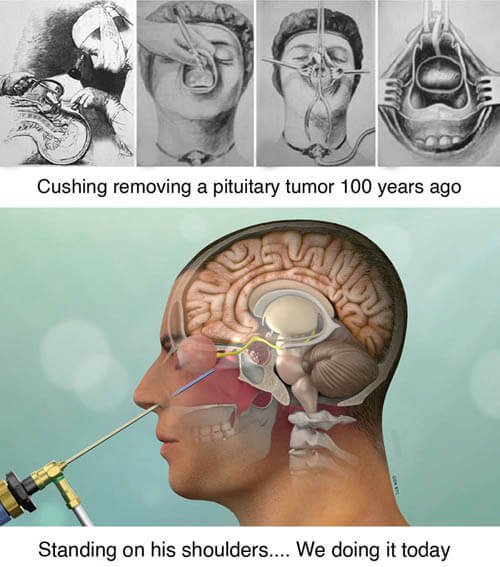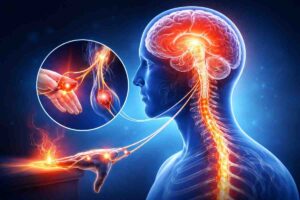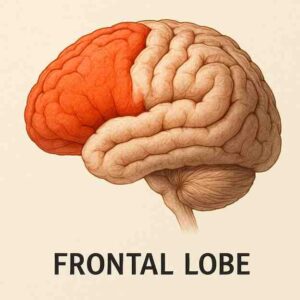A tiny tumour within the pituitary gland, discovered nearly a century ago by Harvey Cushing, continues to be the bane of existence for many women

“I have put on an incredible amount of weight in the past two years,” said 38-year-old Tanya Patel, plonking herself on my office chair after barely managing a few steps on her own. She was bruised all over. “Even a minor bump causes my skin to discolour and swell,” she said showing me her arms that had the words ‘today I escape’ inscribed in Sanskrit. “I’ve had three fractures and two miscarriages and now I can’t even conceive,” she lamented, her eyes welling up. “I have hair growing all over my body and I am ashamed to even look at myself in the mirror,” she burst out crying, covering her acne in the palms of her hands.
“I’ve had PCOD (polycystic ovarian disease) for years, and doctors are attributing all my symptoms to that. My periods are irregular and I’ve been on hormonal medication forever but I’m tired and exhausted and annoyed and irritated and depressed!” she exclaimed, as she emptied a bag full of pain killers, oestrogen and progesterone tablets, drugs for diabetes and hypertension, and mood elevators for her bipolar disorder. “My sugars are all over the place, my wounds don’t heal, and I bleed profusely if and when my period decides to come!” she said, exasperated.
I examined her thoroughly after some more questioning. She had a very typical physiognomy. Her obesity was mainly truncal, while her arms and legs were lean. Her face was round like the moon. She had a bulge on her upper back where fat had deposited – in medical jargon we call this a ‘buffalo hump’, classical of a certain ailment. I held her hands in mine and noticed that certain parts of it were very darkly pigmented. My suspicion grew stronger. “I think you may have Cushing’s Disease,” I decreed.
“It’s a condition where you get a bunch of these symptoms because of a tumour of the pituitary gland producing excess cortisol. You can also see several of these features in people who are put on long-term steroids for either asthma or rheumatoid arthritis. But as you’re not taking any, it’s probably your body over-producing cortisol from either your brain or your adrenal glands. We must do some testing and get an MRI of the brain. If it is what I think it is, we’ll have an answer to all your problems,” I left her with hope. After all that she had been through, that was the least I could provide for the time being.
She came back with her extended family a few days later, completing the myriad tests that had been ordered. “Bingo!” I snapped my fingers. The MRI showed an 8 mm tumour within the pituitary gland, off to the left. I pointed to it with a pen. “That’s the enemy,” I smiled. “That tiny thing is doing this to me?” she asked, aghast. I nodded, confirming after checking all the biochemical tests to collaborate my findings. “We’ll remove this via the nose using an endoscope and you’ll be cured. In the place I trained, we probably did more of these than anywhere else in the world,” I said to boost her confidence. She looked at me with incredulity, still unable to believe that such a tiny thing can cause so much havoc.
A few days later, along with my ENT colleague, we made our journey through the nose. Navigating our way through the turbinates, we broke the posterior part of the nasal septum and entered a cavernous structure. “That’s the sphenoid sinus,” I demonstrated in 4k on a giant screen to some medical students interested in neurosurgery who were visiting us, standing on their toes with excitement. I had gotten them to see Tanya before surgery and explained her MRI to them. They were shocked to know that a brain tumour can be removed through the nose.
I drilled the floor of the sella, the bony saucer that cradles the pituitary gland. “You have to be very careful while you drill,” I cautioned them, “as on either side of the sella are the carotid arteries, the main blood vessel of the brain, and if I damage it, the patient could die in an instant,” I narrated to add some shock and awe value and keep them engaged. “Shubh shubh bolo, sir,” my assistant prodded. I cut the dura covering the gland widely and there it was – 8 mm of a cheese ball that we curreted fastidiously and removed completely. “That’s the normal pituitary gland to the right, pinkish and fleshy, a stark contrast from the tumour, which is soft and squishy,” I explained.
“Do you know who Harvey Cushing was?” I questioned the medical students while we closed in a meticulous fashion. “He was the father of modern neurosurgery,” one of them replied. I was impressed. “Cushing called this condition the ‘diabetes of bearded women,’” I enlightened them further. “And do you know what his contributions were besides naming this disease over a 100 years ago?” They remained silent.
“He was the youngest of 10 children who augmented neurology and neurosurgery to the respect it has now. He used X-rays to diagnose brain tumours at the time and introduced to the United States blood pressure measurement that he saw being practiced in Italy. He described a definitive condition of raised intracranial pressure where there is a triad of bradycardia, hypertension, and irregular breathing and named it Cushing’s Reflex. He worked at both Johns Hopkins and Harvard, writing numerous papers on several important discoveries he made, designing several surgical instruments, describing new procedures, teaching surgical trainees, and maintaining detailed records of his 2,000 brain tumour surgeries,” I lectured.
Harvey Cushing was nominated for the Nobel prize in physiology and medicine 38 times, but never won. However, he won a Pulitzer Prize in 1926 for the biography of Sir William Osler. He died of a heart attack. Interestingly, his autopsy revealed a tumour-like cyst in the brain.
After Tanya was discharged, her care was taken over by an endocrinologist to finetune her medication. But we stayed in touch over the phone and became friends. She came to me for a follow up a year later looking unrecognizable. She had lost 30 kg and looked well-toned, with glowing skin and dazzling hair. “I’m 2 months pregnant and I only have you to thank!” she said, holding hands with her husband. “Please don’t thank me, the nose was the only orifice I entered,” I joked. “Either thank him,” I said, directing my gaze to her husband, “or thank Cushing, without whom we’d still be treating you for PCOD.” “Cushing Zindabad!” she cheered, and gave me a tight hug.




